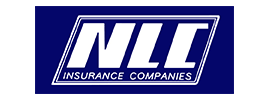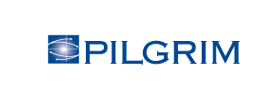
It’s important to have an understanding of your insurance policy before you have to make a claim. Take the time to learn about the terms, conditions, what’s covered, the limits, exclussions, and your deductibles. Being familiar with all these details of your policy will help you make smarter choices if you need to file a claim.
Assess the Situation
When an incident occurs that may lead to a claim, the first step is to assess the situation. Determine the extent of the damage, loss, or injury. It’s essential to ensure everyone’s safety and take immediate steps to mitigate further damage or harm. For example, in the case of a car accident, check if anyone is injured and call emergency services if needed. If it’s a property-related incident, try to prevent further damage, like stopping a water leak or securing the area.
Mitigate future loss
Your insurance company contract holds you accountable for taking reasonable measures to avoid further losses. This may include covering leaking roofs with tarps, removing wet drywall to prevent mold growth, and other similar steps. Please remember to keep any damaged items on your property for the adjuster to look over and avoid throwing them away.
Notify Your Insurance Company
Contact your insurance company or agent as soon as possible after the incident. Most insurance policies require prompt notification of a claim. Be prepared to provide specific details about the incident, such as the date, time, location, and a description of what happened. If there are injuries or third-party involvement, be sure to mention that as well. Your insurance company will guide you through the next steps.
Gather Documentation
To support your claim, you’ll need to gather relevant documentation. This may include:
- Incident Report: If applicable, file a police report for incidents like accidents or thefts.
- Photos and Videos: Take clear photos or videos of the damage or injuries. Visual evidence can be crucial in the claims process.
- Witness Information: If there were witnesses to the incident, collect their contact information in case their statements are needed.
- Receipts and Invoices: Keep all receipts, invoices, or bills related to the incident, whether it’s for medical expenses, repairs, or replacements.
- Estimates: Obtain repair or replacement estimates from reputable sources. This is particularly important for property or auto claims.
Meet with Adjusters
Your insurance company will assign an adjuster to assess the damage or loss. For auto insurance, this could be an auto adjuster, while property claims may involve a property adjuster. Cooperate fully with these professionals, providing them access to inspect the damage. Be honest and provide all requested documentation.
Review Settlement Offer
Once the assessment is complete, your insurance company will provide a settlement offer. Review it carefully and ensure it aligns with your policy’s coverage and your expectations. If you believe the offer is insufficient, discuss your concerns with your claims adjuster
Payment Issued
You may receive reimbursement for your damages in multiple payments. The estimate of damages provided to you will outline the different payments, including the first payment which is the Actual Cash Value (ACV). This refers to the cost of replacing or repairing an item, minus depreciation. Depreciation is the decrease in value of an item due to age and wear and tear.
Repairing your property
You should get in touch with a contractor of your choosing and share a copy of the estimate with them. It’s important to go through the estimate together to make sure that they have a clear understanding of the extent of the damage and the repair process. If there are any discrepancies in the cost, let us know right away. After the repairs have been completed, you could be qualified for the following benefits
Second payment: Replacement Cost
In case your insurance policy has replacement cost coverage, you can receive the entire amount mentioned in the estimate you received with your initial payment. However, you need to provide your desk adjuster with certain documents to prove that you have completed the repairs. These documents include an itemized invoice, pictures of the repaired property, and any other documentation requested. Additionally, a follow-up inspection may be necessary.
After the review process, the carrier will give you back the money they withheld for depreciation or the cost of the repairs minus the deductible and initial payment, whichever is lower.
Pro-Tip:
Provide clear evidence, details, and estimates for your claim. Write down what you need, why you need it, and when you need it. Be honest with your claim and don’t add false details. Before signing any legal papers, speak to your local independent insurance broker, public adjuster or your lawyer.
Your Local Independent Insurance Broker
For more than 40 years, Vargas & Vargas Insurance has been providing assistance to both families and businesses. To get in touch with our team, you can dial 617-298-0655.












